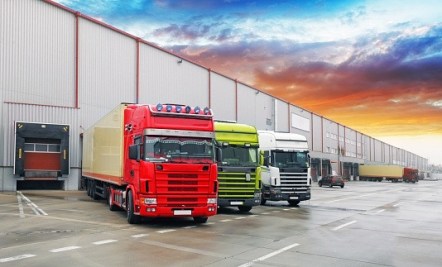With shortages in British Columbia and Ontario, Canadian cannabis connoisseurs are beginning to question the necessity of government-controlled cannabis wholesaler distribution.
Distributing cannabis without the government should not be a controversial topic. We have the food industry leading the example. An actual market we can use as a comparison.
And this isn’t an either/or situation. All five of these examples can (and do) work parallel with each other.
FIVE – Redistributors
Redistributors don’t sell directly to your local grocery store. They are a step between. The “middle man.” They typically get a lot of hate from the economic illiterate, and there’s no reason for it.
The redistributor purchases food straight from the source. Do you know how much that is? We’re talking massive bulk quantities—large purchases with lots of volumes.
Smaller distributors don’t have the capacity to deal with all that food. They have to rely on these larger guys to break it up. Smaller distributors focus on supplying your grocery store.
Is cannabis in Canada large enough to require similar supply-chain requirements? People will figure that out through the consensual actions of the free market.
FOUR – Specialty Distribution
Specialty distribution is what it sounds like. These distributors deal in distinct categories of food. Very specialized. Very niche.
Ever wonder where your favourite local Lebanese Hushwee comes from? They source from specialty distributors.
In food, these distributors work with restaurants and caterers. Nobody involved wants cross-contamination. It’s a mutual interest. And it’s manifested through profit.
If you’re not making money, consumers aren’t happy. You’re doing something wrong.
Bureaucratic servants cannot see this essential signal. We cannot stop giving money to the government. That’s the only way this signal becomes visible. You have to put private capital at risk.
THREE – Broadline Cannabis Distribution
Broadline distributors are the guys your local grocery store uses. They move considerable volumes in thousands of product categories. This means they can offer discounts for large volume buyers.
What about the smaller guys? They form a group purchasing organization that allows them to leverage discounts by becoming large volume buyers.
This happens every single day in the grocery business. There’s no reason the cannabis industry can’t replicate it.
And it takes no planning or government committee to do so.
Just let the market do its thing.
Let cannabis consumers, entrepreneurs, and workers find the most valuable ways to serve one another.
TWO – Cash and Carry Distributors
Cash and carry distributors don’t move products. They maintain the warehouses for the benefit of operators. In the food industry, this warehouse is where restaurants, caterers, and other operators go to purchase their wholesale products.
In the cannabis industry? Who knows what distribution models we’ll end up with. Provided the government gets out of the way.
Cannabis isn’t as big as food. Maybe all that’s required is a variety of private distributors scattered all over the provinces. Placed by market demand, not government decree.
These private distributors will have the capacity and purchasing power to buy direct from the farmers. They’ll distribute to the retail stores and maintain this cash and carry model for other operators.
Of course, a cash and carry distributor would come in handy right now. With B.C. and Ontario distribution centres shorting retailers, they could tap these industry-specific warehouses in the short term.
ONE – You and the Farmer
The number one best cannabis distribution model is the one between you and your farmer.
Does anymore need to be said on the topic?
No sane person wants Health Canada in charge of the nation’s numerous farmers’ markets. Yet the federal government controls cannabis this way.
Canadian authorities need to learn a lesson. If you can’t beat ’em, join ’em.
You can’t stop Canadians from visiting their local farmers.
And visiting your local cannabis dealer is a time-honoured tradition. And “dealer” has such a negative connotation. How about cannabis legacy market distributors?
A Lesson in Cannabis Distribution
Ask yourself – what does Canada’s cannabis industry look like to you? What should cannabis distribution look like?
Rational levels of liberty and freedom for grown adults? Or backwards-looking monopoly, the political-economic relic of the 20th century?
Some cannabis shops in B.C. and Ontario look like empty grocery stores from the former Soviet Union. A place that relied too much on the political machinery to allocate resources.
Is this cannabis in Canada?
Or does Canada’s cannabis industry look more like our food industry? Private, competitive, with multiple supply chain processes?
What makes more sense to you? Treating cannabis like nuclear waste? Tightly controlled and monitored by a political bureaucracy?
Or do we treat cannabis like agriculture? That’s what it is. A flower. A weed. No harm to anybody.
Cannabis is a staple commodity. Of diet and energy. Farming and industry. Medicine and recreation.
Cannabis is life. And distribution is its network.






